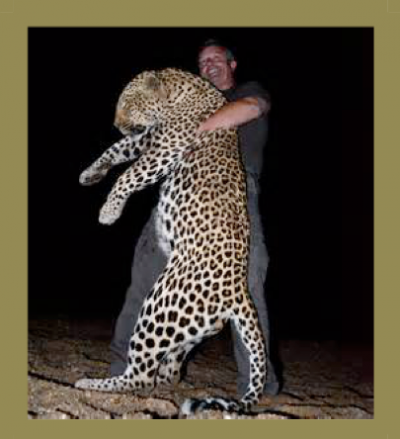|

Yes, it seems to be, but not for the reasons many think.
The SA Department of Environmental Affairs recently refused to offer any further leopard hunting quota to the Provinces. But this was largely because the DEA was not happy about being accused by CITES of bad record keeping and therefore a possibility that CITES would cut the annual leopard hunting quota they hand out to South Africa.
CITES can do this because leopards are listed on CITES Appendix I, meaning that “strict” controls are in place, and that nations that receive such quotas comply with stricter regulations than apply to other CITES Appendix species. In fact, there is a requirement that offtake of Appendix I species actually benefits their conservation.
South Africa receives an annual export quota of 150 leopards from CITES. But South Africa has regularly been exceeding this quota, apparently not much noticed by CITES. Looking at the official CITES trade database for leopard “products” exported from South Africa during the five years 2009-2013, these numbers appear:
Bodies – 39, skins – 227, trophies – 700.
Ooops. That means an average of 193 leopards exported per year, maybe more if you add in the category of “skulls” which I did not count here. The problem is that a leopard trophy can be exported according to a diversity of CITES product codes – like “body”, “skin” and “trophy”. It seems to just depend on the mood of the person filling out the CITES permit on that day.
So South Africa was not in compliance with CITES quotas to begin with.
The DEA then mentioned that the moratorium was put in place because of a “negative non-detriment report”. That means, for those who do not speak CITESese, that South Africa could not prove that leopard exports were not detrimental to the species … in other words, they were most likely detrimental. It would appear that one Province in particular, North West, failed to provide any information at all.
Trophy hunters are not happy. Stan Burger, president of the Professional Hunters' Association of South Africa said there was no evidence to assume SA’s leopards are in decline. Burger says PHASA is seeking legal action to overturn the DEA's decision. He says the agency used only the input of an outside conservation organization that is devoted to the preservation of wild cats, and did not seek input from PHASA or other groups.
The DEA meanwhile listed threats to leopards as excessive legal and illegal shooting of ‘damage-causing animals,’ poorly managed trophy hunting, illegal trade in leopard skins for cultural and religious attire, and generally poor monitoring of hunts and permit allocation.
The moratorium is only for a year, until the DEA can put leopard hunting “norms and standards” in place – most likely only requiring better reporting from the Provinces to satisfy CITES that all is well again. The crucial leopard population count will almost certainly not take place, and we will be back to SA exporting 150 wild leopards again in 2017. In addition to all those illegally killed and traded leopards within South Africa…
Picture credit: kilimanjarorifles.com
|




